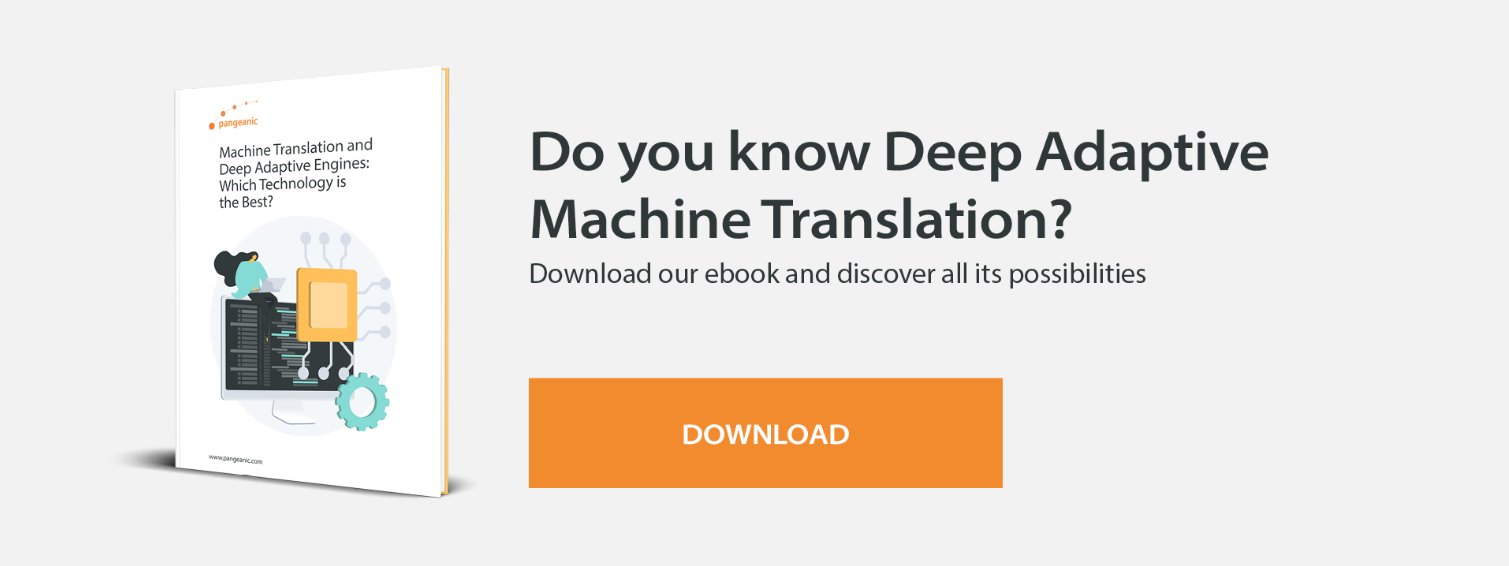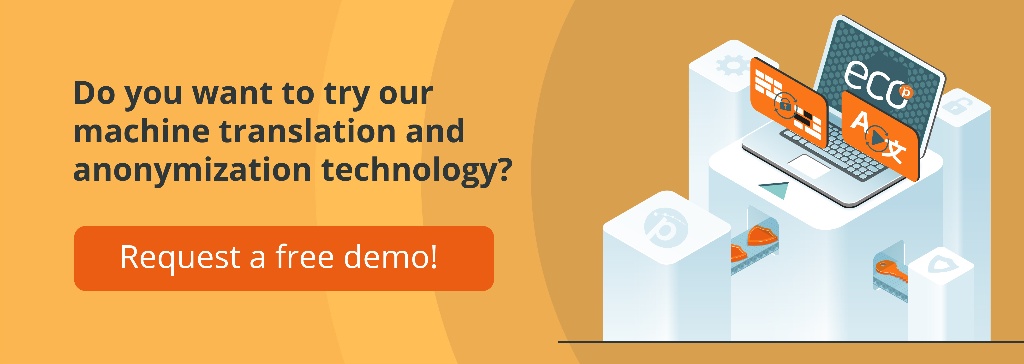
5 min read
24/09/2024
Understanding the Difference between Co-Pilots and AI Agents: the ECOChat Advantage
Two concepts have emerged as powerful tools for enhancing human productivity in less than one year: Co-Pilots and AI Agents. While both leverage AI to assist users, they differ fundamentally in their approach, capabilities, and level of autonomy. Understanding these differences is crucial for businesses looking to implement AI solutions effectively. Pangeanic uses AI Agents to verify terminology and over-post-editing in Deep Adaptive AI Translation. Still, our ECOChat is often classed as a hybrid between a Co-pilot and an AI Agent. In this article, we'll explore the technical distinctions between Co-Pilots and AI Agents and introduce ECOChat - Pangeanic's revolutionary AI Virtual Assistant that combines the best of both worlds.
Co-Pilots: The AI Sidekick
Co-pilots are AI systems designed to work alongside humans, offering suggestions and assistance without taking control. They're like helpful colleagues who are always ready with advice but leave the final decision to you. A Co-pilot acts as an assistant that does not lead but facilitates tasks related to text processing and programming. It uses advanced language models like GPT-4 to understand and generate content based on user instructions.
Co-Pilots Features:
-
Conversational Interaction: A Co-pilot operates through a conversational system, allowing users to interact with natural language commands. This facilitates obtaining updated information and generating varied content, from texts to images.
-
Assistive Role: Co-Pilots provide suggestions and complete repetitive tasks, enhancing user efficiency without autonomous decision-making.
-
Context-Aware Recommendations: These systems analyze the current situation and offer relevant suggestions based on the context.
-
Limited Autonomy: Co-Pilots operate under user supervision, automating certain parts of a task but not taking independent action.
-
Task-Specific Expertise: Most Co-Pilots are domain-specific, specializing in areas like code writing or text editing/.
-
Tight Integration with User Tools: Co-Pilots are typically embedded within existing software environments, such as IDEs or text editors.
-
Integration into Tools: Microsoft Co-pilot integrates into Microsoft 365 applications, helping users perform tasks such as document creation, data analysis, and email management. It is also available in Windows 11 for system-level assistance. Pangeanic's ECOChat, however, does not depend on the operating system: you can install it on your website to answer questions related to your field and use your content as a reference. The corporate version of ECOChat can run privately in a dedicated SaaS, and the client decides what data is used and when and who has access to certain information. Thus, clients receive product-related information in the language of choice but no information about finances, procedures, or operations.
Technical Architecture of Co-Pilots:
Co-pilots primarily rely on user input as their driving force. They utilize pre-trained models, often based on large language models (LLMs), that have been fine-tuned for specific domains (typically with the user's content and knowledge). These models analyze user input and generate suggestions in real-time.
For example, GitHub's Copilot uses OpenAI's GPT models trained on vast open-source code repositories. Copilot analyzes the code context as a user types and suggests relevant snippets or completions. The system adapts based on user acceptance or rejection of its suggestions, creating a feedback loop that improves performance over time.
More information:
How the New ChatGPT Will Send Ripples of Change Through the World as We Know It
AI Agents: The Autonomous Performers
|
In contrast to Co-Pilots, AI Agents are designed to operate with a higher degree of autonomy. An intelligent agent perceives its environment, takes autonomous actions to achieve goals, and improves its performance through learning or acquiring knowledge. AI Agents perform tasks, make decisions independently, and have an objective function that encapsulates all their goals, designed to maximize the expected value upon completion. A thermostat, a business, and even a human being can all be examples of intelligent agents. |
 |
Key Features of AI Agents:
- Autonomy: AI Agents can operate without constant human intervention, making decisions and taking actions on their own.
- Goal-Oriented Behavior: These systems are driven by specific objectives and use algorithms and data to achieve their goals. In Automatic Post-Editing, for example, it may verify terminology, sentence length, or over-post-editing.
- Environment Interaction: AI Agents continuously interact with their environment, learning and taking initiatives and strategies to achieve their goals. They are thus reactive and proactive.
- Learning and Adaptability: Advanced AI Agents use techniques like reinforcement learning (see below) based on past experiences to improve performance over time.
- Decision-Making Capabilities: Unlike Co-Pilots, AI Agents can make decisions and act upon them without user approval for each action.
- Specialization: They are designed for specific tasks, as opposed to chatbots that focus on general conversational interaction
More information about agents:
What Is Reinforcement Learning from Human Feedback (RLHF) and How Does It Work?
Technical Architecture of AI Agents:
AI Agents follow a "sense-think-act" loop, allowing them to interact with their environment autonomously. They collect data through sensors or inputs (sense), process this data using AI models (think), and then execute actions based on their conclusions (act).
Many AI Agents employ reinforcement learning, where the agent learns optimal actions through trial and error. For instance, OpenAI's robotic hand that solves Rubik's cubes uses reinforcement learning to improve its performance over time.
AI Agents often incorporate sophisticated decision-making frameworks, combining rule-based systems, statistical models, and neural networks. In complex domains like autonomous driving, these agents make real-time decisions based on a combination of pre-programmed rules and deep learning models trained on extensive datasets.
Introducing ECOChat: The Best of Both Worlds
Understanding the distinctions between Co-Pilots and AI Agents is crucial as they are beginning to play a role in organizations that deploy GenAI products to become more efficient. So, what if you could have a solution that combines the strengths of both? Enter ECOChat, the first AI Virtual Assistant that truly bridges this gap.
ECOChat takes the assistive nature of Co-Pilots and enhances it with the autonomous capabilities of AI Agents, all while maintaining unparalleled accuracy and multilingual support. It is your data, in complete privacy, which makes ECOChat an efficient multilingual knowledge center. This is why ECOChat stands out:
- Data-Driven Accuracy: Like the best Co-Pilots, ECOChat provides assistance based on your specific data. However, it ensures that it never hallucinates or provides false information. ECOChat only uses the data you reference, combining the reliability of a Co-Pilot with the data processing capabilities of an AI Agent. This means that Human Resources can create an agent with its procedures, links to legislation or documents, payment systems, reports, non-compliance, internal rules, etc.. Still, the finance department uses internal financial reports and links to the Inland Revenue Service and authoritative tax websites.
- Autonomous Knowledge Extraction: Similar to AI Agents, ECOChat can autonomously process and analyze vast amounts of data. It doesn't just wait for user queries but actively extracts insights from your content, ready to provide informed assistance anytime. If you update your website, ECOChat will be updated, and you can link documents, data repositories, and official or government websites as a reference for ground-truth, hallucination-free answers.
- Multilingual Mastery: ECOChat breaks language barriers, a feature rarely seen in traditional Co-Pilots or AI Agents. It can understand and communicate in multiple languages, making it an invaluable tool for global businesses and communicating with multilingual user bases and clients worldwide. The source data is in one language, but the queries can be in another, and the information is presented in the language of the query.
- Specialized Assistants: Like domain-specific Co-Pilots, ECOChat can create specialized assistants for departments (HR, Finance, Legal, etc.). However, it goes beyond allowing these assistants to share standard data policies while maintaining department-specific knowledge bases.
- Privacy and Security: Unlike many AI solutions that rely on external servers, ECOChat operates from our secure data center. This ensures that your sensitive information never leaves your control, combining the privacy consciousness of enterprise Co-Pilots with the processing power of advanced AI Agents.
- Rapid Deployment: ECOChat can be set up with your website data in just one hour, offering the quick integration of a Co-Pilot system with the comprehensive knowledge base of an AI Agent.
By choosing ECOChat, you're not just getting a Co-Pilot or an AI Agent - you're getting a comprehensive AI solution that adapts to your needs. Whether you need assistance drafting documents, analyzing market trends, or providing customer support in multiple languages, ECOChat is equipped to handle everything.
Don't settle for fragmented AI solutions. Embrace the future of AI assistance with ECOChat - where the line between Co-Pilot and AI Agent blurs, and your business's potential becomes limitless.
Ready to revolutionize your business with AI? Contact us today to learn how ECOChat can transform your operations and boost your productivity.




